Adjusting and replacing a power-steering drive belt
The Video Course teaches you everything about modern cars.
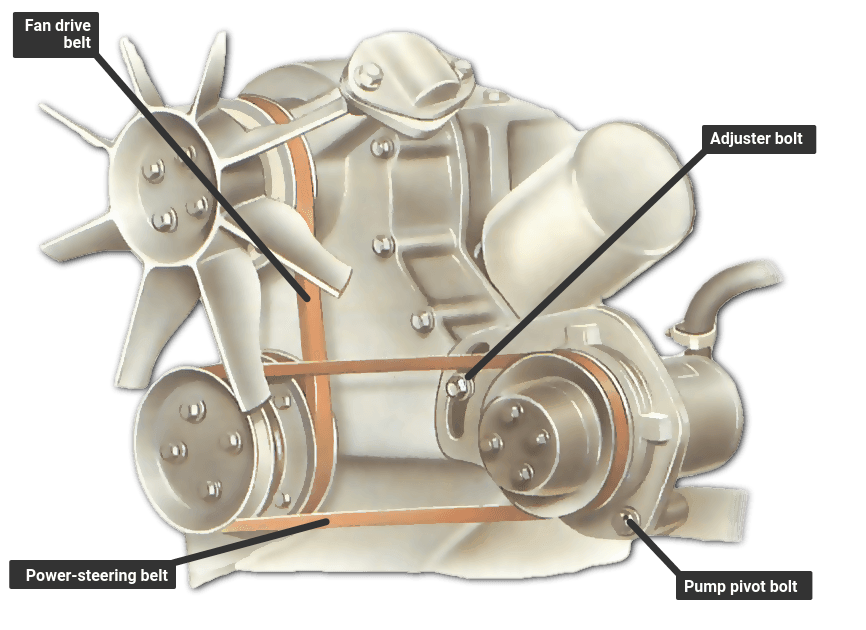
The belt that drives a power-steering hydraulic-fluid pump is usually at the front of the engine , turned by a pulley on the crankshaft .
It is generally separate from the belt that drives the water pump and alternator , but it may drive other components as well as the power-steering pump .
A slack belt tends to slip, wears fast and may even break; it also makes the steering feel jerky or heavy.
A slipping belt sometimes gives itself away by a loud screeching noise, particularly when you start the engine from cold. The tension of the belt can be adjusted to stop it slipping.
The pump is pivoted so that you can swing it in or out from the engine to adjust the belt tension. Moving the pump away from the engine increases the tension. As well as a pivot bolt there is an adjuster bolt that slides in a slot. Some cars also have a slotted-link adjuster.
Inspect the belt, along with the rest of the power-steering system (See Checking power-assisted steering ), at least every six months; at 6,000 miles or 10,000 km; at the intervals recommended in the car handbook; and, of course, at any time you suspect that it may be slipping.
On most cars you can inspect the belt by looking down inside the engine compartment. On a few, you may need to raise the front of the car on ramps and inspect from underneath.
Check for both wear and tension. If you find that the belt is loose, adjust it at once. If it is worn, replace it as soon as possible.
If you buy a new belt, compare it with the old one to make sure that it is the same size and an approved make.
After adjusting or replacing the belt, test drive the car on a quiet road to check the steering. A new belt will stretch slightly after about 100 miles or 150 km. Readjust it then.
Checking and adjusting the tension
Make sure the pulleys at each end of the belt are in line. Lay a straight-edge between the pulleys; both should be parallel with it.
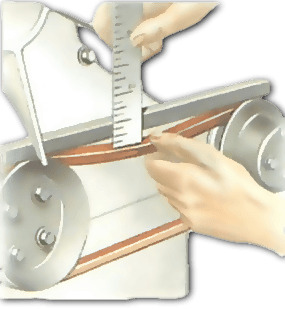
To check the tension, lay a straight-edge along the outer edge of the belt. If the belt goes round more than two pulleys, use the longest run of the belt.
Use your thumbs to push the belt inwards at its mid point, pushing quite hard.
Measure how far you can push the belt from the straight-edge: you may need a helper to do the measuring.
The car handbook should give the correct amount of deflection. If not, 3/8 in. (10 mm) is about right. Compare your measurement with the deflection figure given in the handbook, and adjust the belt accordingly.
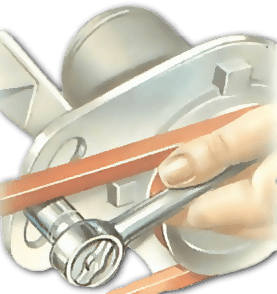
Slacken the adjuster bolt slightly. Then very slightly slacken the pivot bolt or bolts until the pump just starts to move.
If the belt was too tight, the pump will move inwards towards the engine as the bolts are slackened. To get the correct tension, pull it out slightly.
If the belt was too slack, increase the tension by levering the pump outwards with a strong screwdriver or flat bar.
Lever against the cast front end of the pump body, just behind the drive-belt pulley — not against any other part of the body or pipework, which are easily damaged.
Rest the other end of the lever against a sturdy part of the pump mounting bracket on the engine.
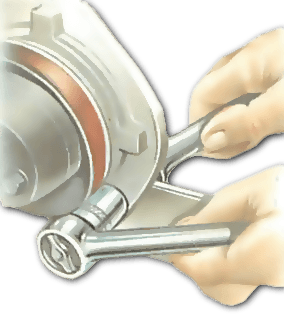
Check the belt tension while you hold the pump in position. Measure the deflection from a straight edge.
When the tension is correct tighten the adjuster bolt. Check the tension again before tightening the pivot bolt or bolts.
Re-check and readjust it as necessary until it is correct with the bolts fully tightened.
Checking belt wear
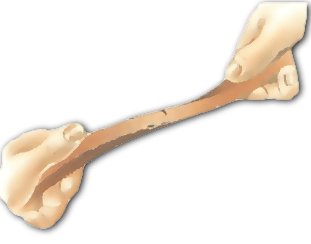
Inspect every inch of the belt on both sides. Look for nicks, cuts, fraying, scores and cracks. Flex the belt to open up any cracks.
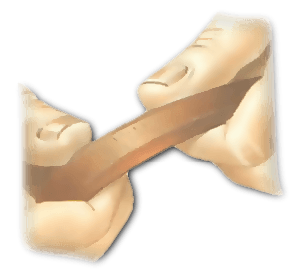
Check the lengths of the belt between the pulleys and mark them with chalk. To expose the rest of the belt for inspection, turn the engine slightly with a spanner on the crankshaft-pulley nut.
Keep your hair, tie or any loose clothing clear of the turning belt.
Replacing a belt
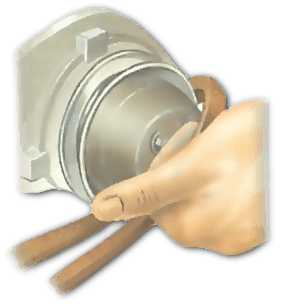
Never try to lever off the old belt, you may damage the pulley.
Slacken the adjuster and pivot bolts, and push the pump inwards by the cast front plate until the belt is slack enough to ease off.
Do not push against any other part of the pump or pipework, or you may damage it.
Remove the old belt. If it is the outermost of several belts on the engine, removal is straightforward. If not, you may need to unfasten some other belt or belts (See Checking, adjusting and refitting drive belts ) before you can remove it.
Fit the new belt, making sure that it is properly seated.
Pull the pump outwards and adjust the tension.
Refit and re-tension any other belts you may have had to unfasten.
Readjust the power-steering belt after about 100 miles (150 km) of driving.
The Ultimate Car Mechanics video course
Learn everything about modern cars from our new video series.
Learn more >-
We build a Mazda MX5 Miata from scratch
We start by tearing down and then rebuilding the whole car.
-
Every part explained
There's ridiculous detail on every part. Clearly and easily explained.
-
All modeled in 3D
We've created the most detailed 3D model ever produced so we can show you everything working.






